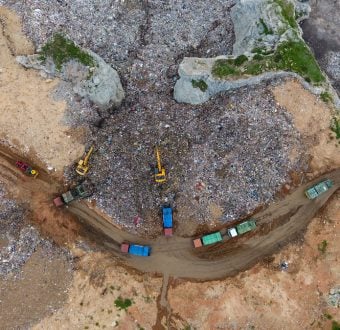by Greenpeace International
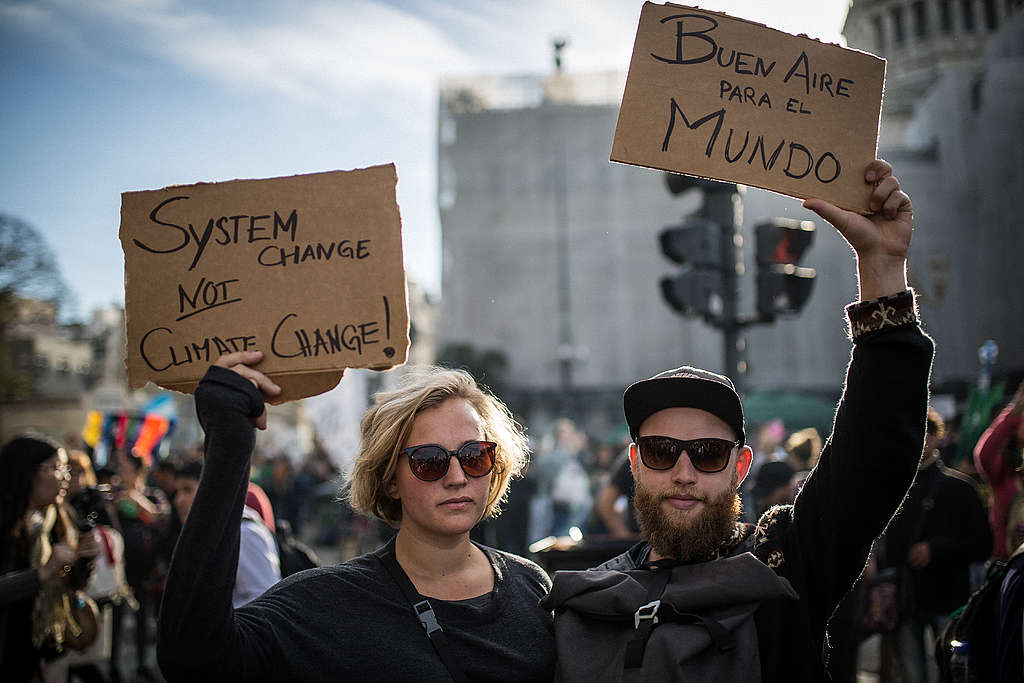
©Nicolás Villalobos/Greenpeace. Activists holding up signs demanding clean air and system change at a climate march in Buenos Aires, Argentina
Now we are in the middle of another historic global moment—one whose magnitude we are still processing.
But the fight against the climate crisis isn’t going anywhere. Staying home right now, if you’re able, and helping slow the spread of COVID-19 is our priority right now. To protect our family, our friends and do our best to relieve a strained medical system and to support communities that are most affected by the pandemic and most at risk, such as Indigenous communities.
However, if you’re fortunate enough to be able to stay home and are ready to add climate action back into your routine, here are some of our favorite ways to stay connected to the movement, wherever you find yourself:
Dinner Table Discussions
Use this moment of social distancing to really engage your close ones in a conversation on the climate crisis (whether it is online, or at the actual dinner table). Spend time understanding what people are thinking, what issues matter to them in their neighborhood, community or city, and what are the potential remedies. These conversations will look a lot different than they do with climate activists, and that’s okay! Remember, spend 70% of your time listening and 30% speaking. Document these conversations, if you want and share them to encourage others to do the same.
Here’s a tip: Open with “what are three things you would change about your city if you were mayor for a week?” or “as a member of this community, what do you think we should be asking of our city council to mitigate this crisis?”
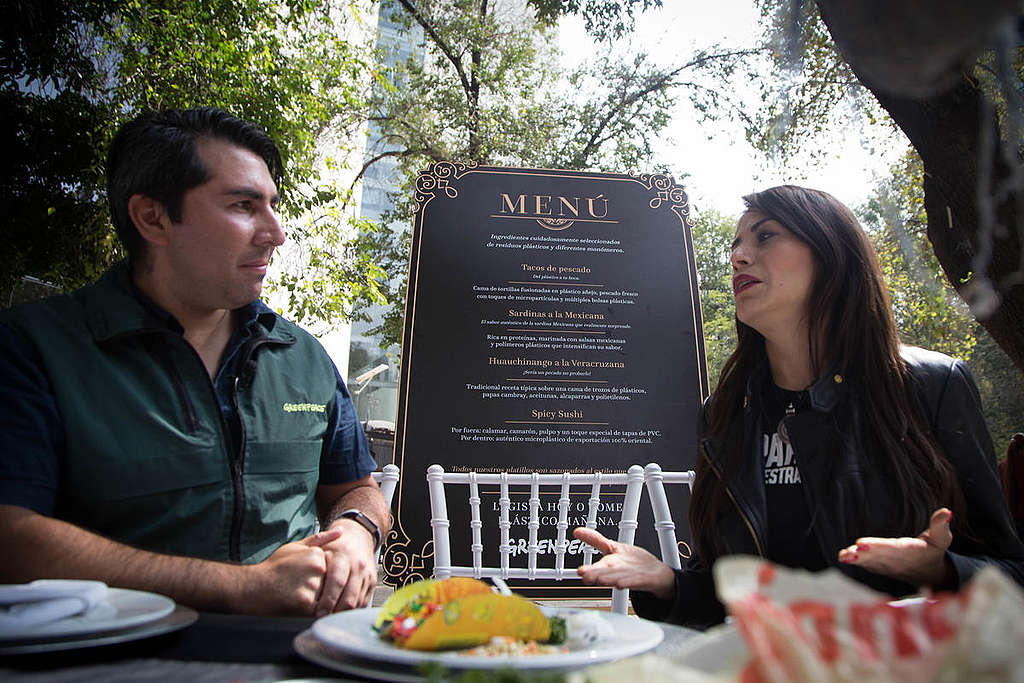
© Ilse Huesca Vargas / Greenpeace Verónica Delgadillo, Senator of the Citizens’ Movement political party (R) meets Miguel Rivas, Greenpeace Oceans campaigner (L). Greenpeace organizes a banquet outside the Senate of the Republic in Mexico City, to raise awareness on plastic and microplastic pollution.
Build Bridges
Put your research skills to work! Find out which local advocacy groups in your city or state are active in the fight for the climate, including water rights, land use, climate justice or any other topic that’s important to you. Learn more about their campaigns, their causes, and see how you start sharing the word now to start building bridges now for future collaboration!
Get informed
If you have the time, or are looking for an activity the whole family can participate in, make that reading list of climate books you’ve always meant to. Or catch up on some environmental documentaries. Get inspired by these stories and discuss.
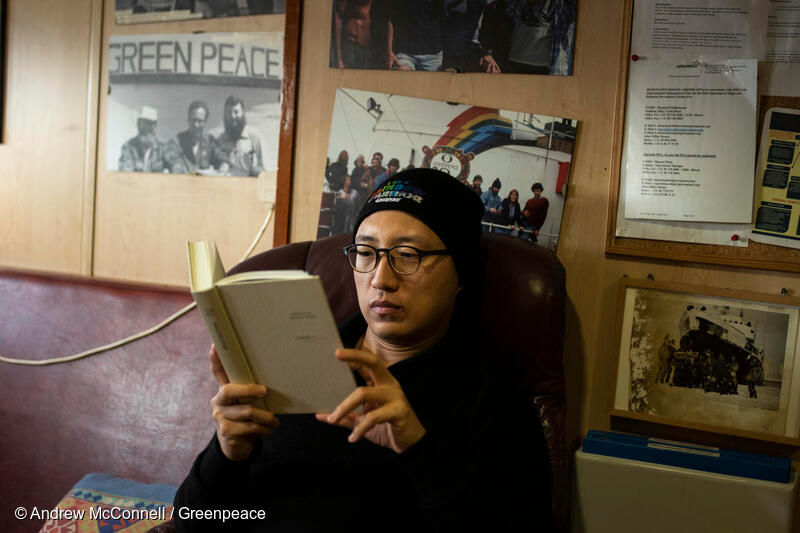
Yang Wang relaxes on board the Esperanza while anchored in Discovery Bay, Greenwich Island, in the South Shetland Islands, Antarctica. The Greenpeace ship Esperanza is on the final leg of the ‘Protect The Oceans’ voyage from the Arctic to the Antarctic. The almost year-long voyage is one of Greenpeace’s biggest ever expeditions and highlights the many threats facing the oceans while campaigning for a Global Ocean Treaty covering all seas outside of national waters.
Participate in online forums about the climate crisis
Engage in conversations around the climate emergency. There are many free webinars where you can listen to the experts’ opinions. Share these webinars with your friends or, even better, open a discussion about what you have learned.
Get Social
There are many ways to be an activist digitally in times of quarantine too
- Create unique Instagram filters or a template for your story, which help to make your campaign visible (Here is an example from an oceans campaign) and others can share on their own accounts.
- Start a Twitter storm: make people aware of the environmental problem that is occurring, the more tweets there are, the better it will be! If you know users with a large number of followers, you can ask them to spread the word about your campaign.
- Use Tik Tok and new digital trends to approach a serious and technical problem in a friendlier language (be creative!).
- Use these channels to share news, videos and your ideas about the climate crisis and its impact. If you find news that you feel passionate about, for example, deforestation, endangered species, air pollution, you can share them on your social networks. Make sure you always check that the information is accurate and post from trusted organizations and news outlets. Get your friends and followers involved in the discussion.
Be aware of your consumption habits
Review your daily habits. If we all look over our regular consumptions, we realize that our small actions can contribute to mitigate the climate crisis.
- What we eat is important to reconsider. Ask yourself about your meat consumption and try to reduce it, so you can contribute in the fight against climate emergency. 14.5% of global greenhouse gas emissions come directly from livestock. And if you have extra time now, what a better time to experiment with plant-based recipes. See what new dish you can create!
- You can also take this time to battle plastic pollution. Start by checking how many single-use plastics you consume currently and if they’re necessary. Spoiler: they’re not. (Unsure if something is reusable or disposable? Check your facts). Keep this in mind if you have to go to the market. And take the time to plan and make a list. An organized refrigerator will help prevent food waste — a major contributor to the climate crisis— and save you unnecessary trips to the store in this uncertain time. You can also finally try growing some of your own food; start with herbs or veggies to grow on your windowsill.
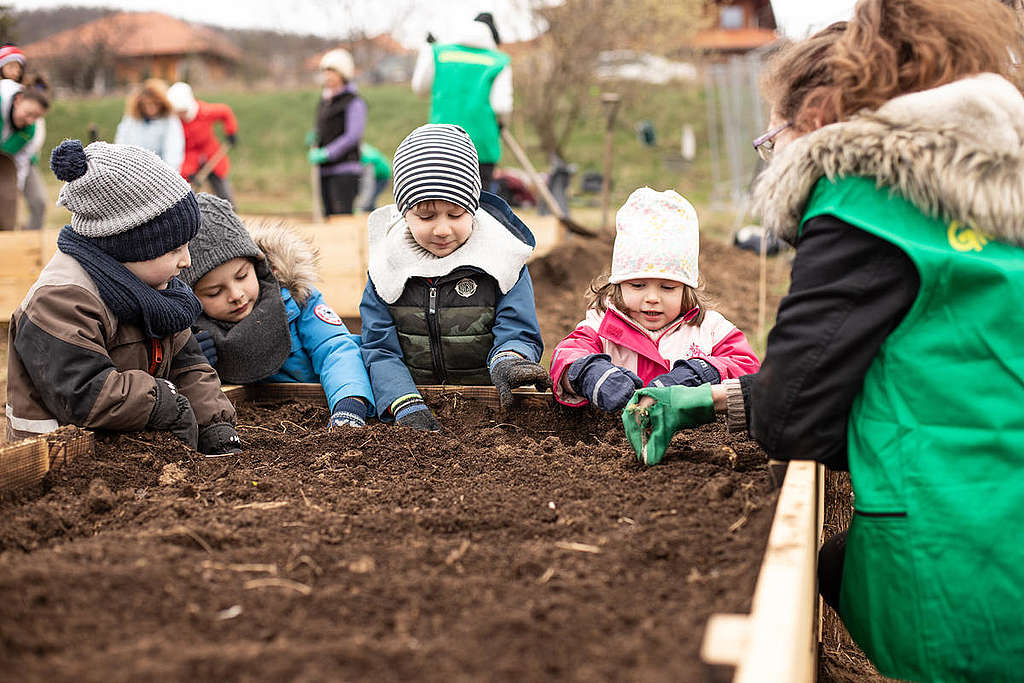
© Zsuzsi Dorgo / Greenpeace. Greenpeace Hungary’s volunteers build raised vegetable beds in the community garden of Nagykovácsi town. Fresh, local and environmentally-friendly vegetables will be put on the table for preschoolers. We hope that as many places as possible will follow this example. Greenpeace wants children to get the best out of their school cafeterias: chemical-free, locally produced, healthy and high quality ingredients.
- Find a way to reuse the plastic you already have. How can you repurpose? When you’ve used up a container, make sure to clean it up and if you can’t repurpose, recycle. Find out where you can take them after the isolation. If you don’t know where to start, your city will have information that might help you. Reusing plastics are good ways to prevent you from buying more needless plastics.
Use these ideas as a starting point for creative thinking to move forward. In a world of quarantines and disruption of offline life, let’s make our demands as impactful and innovative as possible.
And don’t forget, solidarity is a powerful thing. Together we can overcome anything.
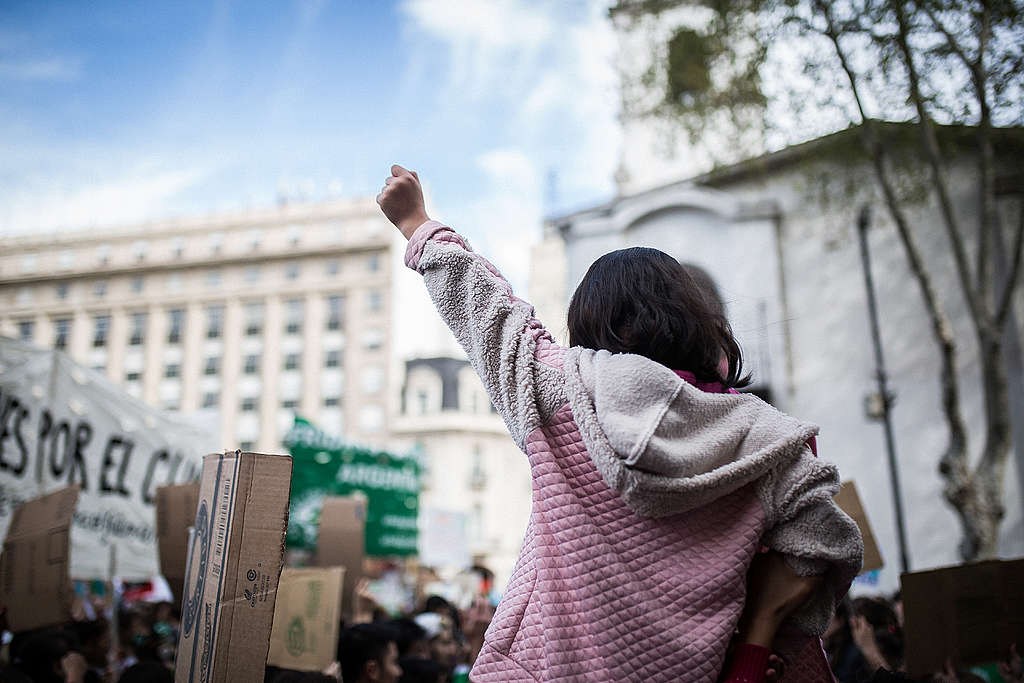
©Nicolás Villalobos/Greenpeace. Young activist at a climate march in Buenos Aires, Argentina.

